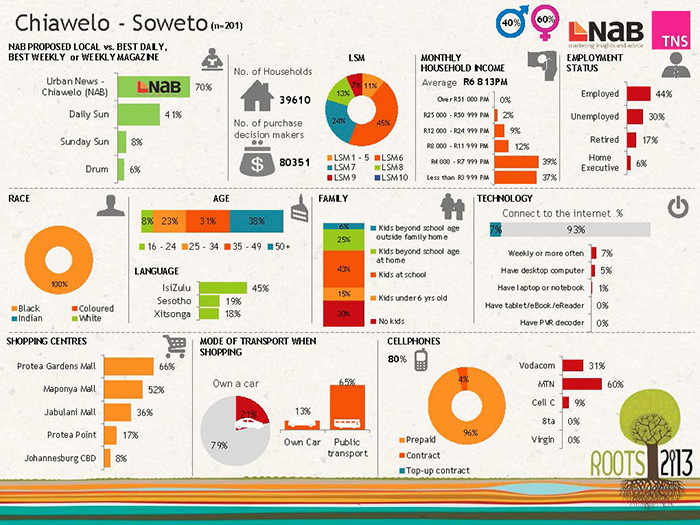Encouraging growth in iconic South African township


JOHANNESBURG -- Soweto, the South Western Township constructed among the gold mines that once dotted the land outside of Johannesburg, has been the center for South African black culture for decades. It was here that many of the earliest battles against apartheid were waged, and it is here, among the jumble of well-kept houses and zinc shacks, that evidence of an increase in living standards in urban South Africa is beginning to take hold. A middle class is emerging in an area that has been historically poor.
A survey released in April by the South African Newspaper and Advertising Bureau illustrated a change that's happening across the township. Soweto is massive -- nearly half of Johannesburg's four million people live here -- and the figures that come out of it vary wildly. But the numbers all point to a general growth in incomes and quality of life across the township.
Incomes, while low, are increasing. In the 10 suburbs within Soweto that were surveyed, the average was about $1,000 a month, which is solidly middle class here.
The survey is packed with illustrations that consumer culture is taking root in the township. Most people use cell phones here (mostly opting for the lower-end pay-as-you-go plans) and shop at many of the newly opened shopping malls. A fifth of Soweto travels using their own cars and 70 percent of households here own their own homes. Property values across the township have increased, at rates often outpacing Johannesburg's other, wealthier suburbs.
Carl van Aardt from the Bureau of Market Research at the University of South Africa told the Mail & Guardian, "There are certain parts of Soweto that have affluent people. But the bulk of Soweto falls in the emerging middle class." He added, "The real low-income group is still there but hasn't grown much in recent years."

The growth, while promising, can also be misleading. By outside standards, unemployment in Soweto is shockingly high. Figures show that across the surveyed parts of the township, unemployment hovers around 30 percent. This mirrors the rest of black South Africa, a community still dealing with the legacies of a racist past.
The evolution of one of Africa's most historic areas is also wildly uneven. The new middle class is only growing in fits and starts, and the "Africa Rising" theme that has sprung up in stories coming out of places like Soweto seems to miss the point. Inequity in South Africa is everywhere. Official corruption, mismanagement and incompetence hinder economic growth in the country. South Africa has one of the most unbalanced economies in the world.
Even in Soweto, the inequality is noticeable. In the three decades from 1970 to 2000, the Gini coefficient -- a measure of inequality -- among black households increased 20 percent, a much larger and more visible increase than the one in South Africa's white community.
Economic growth in Soweto, like in much of black South Africa, is a fairly new phenomenon. J P Landman of the Southern African Regional Poverty Network said that "through a period of economic take-off, rising inequality might be an inevitable consequence -- poverty may be rolled back, but not necessarily inequality at the same time."
Photo: Flickr/Sea Turtle
This post was originally published on Smartplanet.com